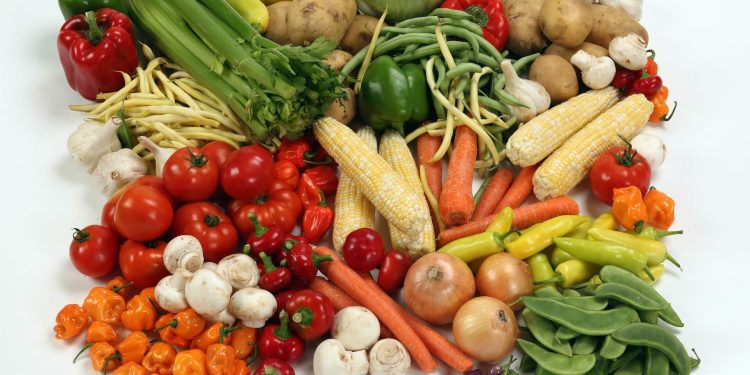When it comes to healthy eating, vegetables are an essential part of a well-balanced diet. They provide vital nutrients, fiber, and antioxidants that promote overall health and well-being. However, not all vegetables are created equal. Some vegetables are high in starch, while others are considered non-starchy. In this article, we will delve into the differences between starchy and non-starchy vegetables, their nutritional profiles, and the benefits they offer. So let’s dive in and explore the world of starchy vs. non-starchy vegetables!
Starchy vs. Non-Starchy Vegetables: What Sets Them Apart?

Starchy and non-starchy vegetables differ primarily in their carbohydrate content. Starchy vegetables contain higher amounts of carbohydrates and calories compared to non-starchy vegetables. The main difference lies in the type of carbohydrates present. Starchy vegetables are rich in complex carbohydrates, while non-starchy vegetables are low in carbohydrates and high in fiber.
Starchy Vegetables: Energy-Packed Powerhouses
Starchy vegetables are excellent sources of energy due to their higher carbohydrate content. These vegetables typically have a higher glycemic index, meaning they can cause a more significant increase in blood sugar levels after consumption. Some common examples of starchy vegetables include:
- Potatoes: Potatoes, whether white or sweet, are a staple in many cuisines and diets. They are versatile and can be prepared in various ways, such as mashed, roasted, or baked.
- Corn: Corn, known for its vibrant yellow kernels, is a starchy vegetable that adds sweetness and texture to dishes. It can be grilled, boiled, or incorporated into soups and salads.
- Peas: Peas, whether fresh or frozen, are a popular starchy vegetable. They are often used in soups, stews, and side dishes.
Other examples of starchy vegetables are:
- Corn
- Beets
- Carrots
- Turnips
- Green peas
- Acorn squash
- White potatoes
- Sweet potatoes
- Butternut squash
Non-Starchy Vegetables: Low in Carbs, Rich in Nutrients
Non-starchy vegetables, on the other hand, are low in carbohydrates and calories but rich in essential vitamins, minerals, and fiber. These vegetables are excellent choices for those looking to manage their weight or control their blood sugar levels. Here are some examples of non-starchy vegetables:
- Broccoli: This green cruciferous vegetable is packed with nutrients and antioxidants. It can be enjoyed steamed, roasted, or stir-fried.
- Leafy Greens: Spinach, kale, lettuce, and other leafy greens are low in calories and high in vitamins A, C, and K. They are great additions to salads, smoothies, or sautéed dishes.
- Bell Peppers: Bell peppers come in vibrant colors and are a great source of vitamin C and antioxidants. They can be eaten raw, roasted, or added to stir-fries and salads.
Other examples of non-starchy vegetables are:
- Black olives
- Purple cabbage
- Eggplant
- Arugula
- Asparagus
- Brussels sprouts
- Celery
- Cabbage
- Red peppers
- Tomatoes
- Summer squash
Nutritional Profiles: How Do They Compare?
Starchy and non-starchy vegetables vary not only in their carbohydrate content but also in their overall nutritional profiles. Let’s take a closer look at the nutrients each type of vegetable provides:
Starchy Vegetables: Fuel for Your Body
Starchy vegetables offer a good source of energy and provide essential nutrients such as:
- Carbohydrates: Starchy vegetables are higher in carbohydrates, which serve as the body’s primary source of energy.
- Potassium: Potatoes, especially the skin, are rich in potassium, an essential mineral for maintaining proper heart and muscle function.
- Vitamin C: Some starchy vegetables, like sweet potatoes, are excellent sources of vitamin C, an antioxidant that supports the immune system.
- B Vitamins: Starchy vegetables, particularly corn, contain B vitamins such as folate, thiamine, and niacin, which play a vital role in energy production.
Non-Starchy Vegetables: Nutrient Powerhouses
Non-starchy vegetables may be low in calories and carbohydrates, but they are nutrient-dense and offer an array of health benefits. Key nutrients found in non-starchy vegetables include:
- Fiber: Non-starchy vegetables are packed with dietary fiber, promoting healthy digestion, satiety, and weight management.
- Vitamins and Minerals: Leafy greens and cruciferous vegetables provide an abundance of vitamins A, C, and K, along with minerals like calcium and iron.
- Antioxidants: Non-starchy vegetables contain a variety of antioxidants that help protect the body from harmful free radicals and reduce the risk of chronic diseases.
Starchy vs. Non-Starchy Vegetables: Which Are Better for You?
The choice between starchy and non-starchy vegetables depends on your specific health goals, dietary needs, and preferences. Here are some considerations to help you decide:
- Weight Management: If you’re watching your weight or following a low-carb diet, non-starchy vegetables are a better choice due to their lower calorie and carbohydrate content. They provide important nutrients while helping you feel full and satisfied.
- Blood Sugar Control: For individuals with diabetes or those looking to manage their blood sugar levels, non-starchy vegetables are generally recommended. Their low glycemic index and high fiber content contribute to better blood sugar control.
- Energy Needs: If you have high energy requirements, such as athletes or individuals with physically demanding jobs, starchy vegetables can provide the necessary fuel to support your activities.
FAQs: Starchy vs. Non-Starchy Vegetables
Q1: Can starchy vegetables be part of a healthy diet?
A1: Absolutely! Starchy vegetables can be enjoyed as part of a healthy, balanced diet. It’s essential to consider portion sizes and preparation methods. Opt for baked or roasted instead of fried preparations and pair starchy vegetables with lean proteins and non-starchy vegetables for a well-rounded meal.
Q2: Are all non-starchy vegetables equally nutritious?
A2: While all non-starchy vegetables offer valuable nutrients, some varieties may have higher concentrations of specific vitamins or minerals. Incorporate a variety of non-starchy vegetables into your meals to reap the full spectrum of health benefits.
Q3: Are starchy vegetables high in sugar?
A3: Starchy vegetables contain natural sugars, but their overall sugar content is generally lower than that of fruits. However, individuals with diabetes or those closely monitoring their sugar intake should be mindful of portion sizes and consult with a healthcare professional.
Q4: Can I lose weight by focusing on non-starchy vegetables?
A4: Non-starchy vegetables can be a valuable component of a weight loss plan due to their low calorie and high fiber content. However, sustainable weight loss requires a balanced approach, including a variety of nutrient-dense foods, regular physical activity, and portion control.
Q5: How should I prepare starchy and non-starchy vegetables to maximize their nutritional benefits?
A5: To retain the most nutrients, it’s best to cook vegetables using methods like steaming, sautéing, or roasting. Avoid overcooking, as this can lead to nutrient loss. For non-starchy vegetables, consuming them raw in salads or smoothies also provides an excellent way to benefit from their nutrients.
Q6: Can I mix starchy and non-starchy vegetables in the same meal?
A6: Absolutely! Combining starchy and non-starchy vegetables in a meal is a great way to achieve balance and enjoy a variety of flavors and textures. Consider pairing a starchy vegetable like sweet potato with a side of steamed broccoli or roasted bell peppers.
Conclusion
Understanding the differences between starchy and non-starchy vegetables is essential for making informed dietary choices. While starchy vegetables provide energy and certain nutrients, non-starchy vegetables are packed with vitamins, minerals, and fiber. Incorporating a combination of both types into your meals can provide a well-rounded and nutritious diet. Whether you’re aiming to manage your weight, control blood sugar levels, or boost your overall health, a diverse selection of vegetables is key. So, next time you’re planning your meals, remember the importance of including both starchy and non-starchy vegetables to reap the maximum benefits of these nutrient-packed powerhouses.












